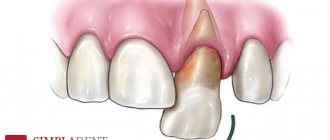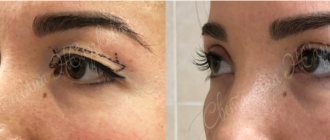Health status
| Congenital generalized lipodystrophy | |
| Other names | Berardinelli-Sape syndrome |
| MRI image showing absence of subcutaneous fat in a patient with the disease (G) compared to a control patient (A) | |
| Speciality | Endocrinology |
| Symptoms | Light body features, lack of subcutaneous fat, muscle hypertrophy, insulin resistance, gigantism/acromegaly, increased appetite [1] |
| Complications | Heart disease, kidney failure, liver cirrhosis, infertility (women), |
| Normal start | After birth |
| Types | CGL type 1, CGL type 2, CGL type 3, CGL type 4 |
Congenital generalized lipodystrophy
(also known as
Berardinelli–Sape lipodystrophy
) is an extremely rare autosomal recessive disorder characterized by an extreme lack of fat in the subcutaneous tissues. [2] This is a type of lipodystrophic disorder in which the amount of fat loss determines the severity of metabolic complications. [3] Only 250 cases of this condition have been reported and it is estimated to affect 1 in 10 million people worldwide. [4]
Presentation [edit]
Congenital generalized lipodystrophy (CGL) is a rare autosomal recessive disorder characterized by insulin resistance, lack of subcutaneous fat, and muscle hypertrophy. [5] Homozygous or compound heterozygous mutations in four genes are associated with four subtypes of CGL. [3] The disease occurs in early childhood with accelerated linear growth, rapid bone aging, and increased appetite. As a child gets older, acanthosis nigricans (hyperpigmentation and thickening of the skin) begins to appear throughout the body - mainly in the neck, trunk and groin. [4] The disorder also has characteristic features such as hepatomegaly or liver enlargement, which occurs due to fatty liver and can lead to cirrhosis, muscle hypertrophy, lack of adipose tissue, splenomegaly, hirsutism (excessive hairiness) and hypertriglyceridemia. [6] Fatty liver and muscle hypertrophy occur because lipids accumulate in these areas instead; whereas in a healthy person, lipids are distributed more evenly throughout the body subcutaneously. The absence of fat tissue where it usually occurs causes the body to store fat in other areas. [7] Common cardiovascular problems associated with this syndrome are cardiac hypertrophy and hypertension (high blood pressure). [8] This disease can also cause metabolic syndrome. Most with this condition also have a bulging umbilical or umbilical hernia. Typically, patients also experience acromegaly with enlargement of the hands, feet, and jaw. After puberty, additional symptoms may develop. In women, clitoromegaly and polycystic ovary syndrome may develop. It impairs fertility in women, and there are only a few documented cases of successful pregnancies in women with CGP. However, the fertility of men with this condition will not be affected. [4]
Differences between type 1 and type 2[edit]
There are differences in how the disease affects patients with type 1 and type 2. Patients with type 1 still have mechanical fat tissue, but patients with type 2 have no fat tissue, including mechanical fat. [9] Patients with type 2 are more likely to have psychomotor retardation and intellectual impairment. [10]
Metabolic complications
Metabolic complications of lipodystrophy syndromes are a major cause of morbidity and mortality in these patients. Deficiency of adipose tissue leads to leptin deficiency, which provokes increased appetite and ectopic deposition of adipose tissue, which in turn contributes to insulin resistance associated with diabetes, hypertriglyceridemia, non-alcoholic fatty liver disease, PCOS, acanthosis nigricans and early atherosclerosis. For most forms of the disease, annual screening for diabetes, dyslipidemia, and liver, kidney, and heart disease should be performed. The main causes of mortality in patients with lipodystrophy syndromes are cardiovascular diseases (cardiomyopathy, heart failure, myocardial infarction, arrhythmia), liver diseases (liver failure, gastrointestinal bleeding, hepatocellular carcinoma), renal failure, acute pancreatitis and sepsis [2, 36].
Mechanism[edit]
Type 1[edit]
In people with CGL type 1, the disorder is caused by a mutation in the AGPAT2 gene, which encodes 1-acylglycerol-3-phosphate-O-acyltransferase 2 and is located at 9q34.3. This enzyme catalyzes the acylation of lysophosphatidic acid to form phosphatidic acid, which is very important in the biosynthesis of fats. This enzyme is highly expressed in adipose tissue, so it can be concluded that when the enzyme is defective in CGL, lipids cannot accumulate in adipose tissue. [eleven]
Type 2[edit]
Those with CGL type 2 have a mutation in the BSCL2 gene, which encodes the Seipin protein and is located on 11q13. This gene encodes the Seipin protein, whose function is unknown. Seipin protein mRNA expression is high in the brain but low in adipose tissue. In addition, patients who have mutations in this protein have a higher incidence of mental retardation and do not have the mechanically active adipose tissue that is present in patients with AGPAT2 mutations. [4]
Type 3[edit]
CGL type 3 involves a mutation in the CAV1 gene. This gene encodes the protein caveolin, which is a scaffolding membrane protein. This protein plays a role in lipid regulation. High levels of Cav1 are typically expressed in adipocytes. Thus, when the CAV1 gene is mutated, adipocytes lack Cav1 and cannot properly regulate lipid levels. [12]
Type 4[edit]
A mutation in the PTRF gene causes CGL type 4. This gene encodes a protein called polymerase I and a transcript release factor. One of the functions of the PTRF product is to stabilize and assist in the formation of caveolae. Thus, the mechanism is similar to type 3 in that caveolae fail to form properly and perform their role in lipid regulation in both. Types 3 and 4 are two different mutations, but they share a common defective pathway. [13]
Osteoporosis and osteopenia
Osteopenia is a pathological condition characterized by a decrease in bone mineral density. The difference between osteopenia and osteoporosis is that in osteoporosis, bone loss is significantly greater, leading to an increased risk of bone fractures.
How often: Far more people with HIV have osteopenia (60%) than osteoporosis (10-15%). For this reason, fractures are more common in HIV-positive young people. It is believed that the lower your body weight, the greater your risk of developing osteoporosis.
Treatment: Bisphosphonate therapy with vitamin D and calcium supplements, including: Fosamax, Bonviva, Actonel, Atelvia and Reclast. Sports activities are also recommended.
Diagnosis[edit]
A medical diagnosis of CGL can be made after observing the physical symptoms of the disease: lipoatrophy (loss of fatty tissue) of the trunk, limbs and face; hepatomegaly; acromegaly; insulin resistance; and high serum triglyceride levels. Genetic testing can also confirm the disease, as mutations in the AGPAT2 gene indicate CGL1, mutations in the BSCL2 gene indicate CGL2, and mutations in the CAV1 and PTRF genes indicate CGL3 and CGL4, respectively. [10] Physical diagnosis of CGL is easier, as patients with CGL are recognized from birth due to their extremely muscular shape, which is caused by a lack of subcutaneous fat. [9]
In patients with CGL3, serum creatine kinase concentrations are much higher than normal (2.5 to 10 times normal). This can be used to diagnose patients with type 3 and differentiate them from CGL 1 and 2 without mapping their genes. Additionally, patients with CGL3 have low muscle tone compared to other patients with CGL. [14]
Treatment[edit]
Metformin is the main drug used for treatment as it is commonly used in patients with hyperglycemia. [15] Metformin reduces appetite and improves symptoms of hepatic steatosis and polycystic ovary syndrome. [4] Leptin can also be used to reverse insulin resistance and hepatic steatosis, reduce food intake, and lower blood glucose levels. [16]
Diet[edit]
Patients with CHF must follow a strict diet for life, as their excess appetite will cause them to overeat. In such patients, carbohydrate intake should be limited. To avoid chylomicronemia, CGL patients with hypertriglyceridemia should follow a very low-fat diet. Patients with CHF also need to avoid common proteins, trans fats, and eat plenty of soluble fiber to avoid high cholesterol levels in the blood. [17]
Treatment of lipodystrophy
In modern medicine, there are currently no effective methods for treating this disease. Therapy is aimed at adjusting the patient’s diet and physical exercise. Although the role of diet in this disease is not so significant, it is a preventive measure in the progression of the disease.
The diet for patients with lipodystrophy has the same principles as for heart disease and diabetes, since it is quite often accompanied by cardiovascular diseases.
In recent years, in developed countries, cosmetic (plastic) methods for correcting lipodystrophy have begun to be used through the use of temporary or permanent fillers (medical silicone, collagen).
History[edit]
Congenital generalized lipodystrophy, also known as Berardinelli-Seip lipodystrophy, was first described in 1954 by Berardinelli [18] and then by Seip in 1959. [19] The CGL type 1 gene was identified as AGPAT2 on chromosome 9q34, [20] and Later. the CGL type 2 gene was identified as BSCL2 on chromosome 11q13. [21] More recently, CGL type 3 has been identified as a distinct type of CGL, which has been identified as a mutation in the CAV1 gene. A distinct type 4 CGL was then identified as a mutation in the PTRF gene. [22]
Links[edit]
- https://rarediseases.org/rare-diseases/congenital-generalized-lipodystrophy/#:~:text=Summary,at%20birth%20or%20soon%20therefter .
- James, William D; and others. (2006). Andrews' diseases of the skin: clinical dermatology
. Saunders Elsevier. p. 495. ISBN 978-0-7216-2921-6. - ^ ab "Lipodystrophy Disorders - Hereditary Lipodystrophies - NORD Physician Guides - Rare Disease Resources for Healthcare Professionals". NORD Physician Guides - Rare disease resources for healthcare professionals
. Archived from the original on 2017-03-10. Retrieved May 1, 2017. - ↑ abcde Garg, A (March 2004). "Acquired and hereditary lipodystrophies." New England Journal of Medicine
.
350
(12):1220–1234. DOI: 10.1056/NEJMra025261. PMID 15028826. - Friguls, B; King, W; del Alcazar, R; Gilbert, P; and others. (2009). "Severe cardiac phenotype of Berardinelli-Sape congenital lipodystrophy in an infant with homozygous E189X BSCL2 mutation". Eur J Med Genet
.
52
(1): 14–6. DOI: 10.1016/j.ejmg.2008.10.006. PMID 19041432. - Gürakan, F; Kochak, N; Youse, A (1995). “Congenital generalized lipodystrophy: Berardinelli syndrome. A Report of Two Siblings." Turkish Journal of Pediatrics
.
37
(3):241–6. PMID 7502362. - Link, Genetics Home. "congenital generalized lipodystrophy". A Home Guide to Genetics
. Retrieved May 1, 2022. - Viegas, RF; Diniz, R.V.; Viégas, TM; Lyra, E. B.; and others. (September 2000). "Heart involvement in generalized generalized lipodystrophy (Berardinelli-Sape syndrome)" (PDF). Arq.
Bras. Cardiol .
75
(3): 243–8. DOI: 10.1590/s0066-782×2000000900006. PMID 11018810. - ^ a b Khandpur, S (2011). "Congenital generalized lipodystrophy of the Berardinelli-Zape type: a rare case". Indian Journal of Dermatology, Venereology and Leprology
.
77
(3):402. DOI: 10.4103/0378-6323.79740. PMID 21508592. - ^ ab Van Mulderghem, Lionel (1993). "Berardinelli-Sape congenital lipodystrophy". University of Washington, Seattle. Retrieved September 5, 2012.
- Agarwal, AK; Arioglu, E; de Almeida, S; Akkoc, N; and others. (May 2002). "AGPAT2 is mutated in congenital generalized lipodystrophy associated with chromosome 9q34". Genetics of Nature
.
31
(1): 21–23. DOI: 10.1038/ng880. PMID 11967537. - Parton, R. G.; Simons, K. (2007). "The many faces of caveola." Nature Reviews Molecular Cell Biology
.
8
(3): 185–94. DOI: 10.1038/nrm2122. PMID 17318224. S2CID 10830810. - "PTRF". A Home Guide to Genetics
. US National Library of Medicine. Retrieved November 7, 2012. - Kim, California; Delepin, M; Boutet, E; and others. (April 2008). "Association of homozygous nonsense caveolin-1 mutation with Berardinelli-Sape congenital lipodystrophy". Journal of Clinical Endocrinology and Metabolism
.
93
(4):1129–1134. DOI: 10.1210/jc.2007-1328. PMID 18211975. - Victoria, me; Saad, M; Purisch, S; Pardini, V (May 1997). "Metformin improves metabolic control in patients with congenital generalized lipoatrophic diabetes." Diabetes
.
46
:618. - Petersen, K. F.; Oral, E. A.; Dufour, S; Befroy, Douglas; and others. (May 2002). "Leptin reverses insulin resistance and hepatic steatosis in patients with severe lipodystrophy". Journal of Clinical Research
.
109
(10):1345–1350. DOI: 10.1172/JCI15001. PMC 150981. PMID 12021250. - Gomes, K; Pardini, VK; Fernandez, A.P. (April 2009). "Clinical and molecular aspects of Berardinelli–Sape congenital lipodystrophy (BSCL)". Clinica Chimica Acta
.
402
(1–2):1–6. DOI: 10.1016/j.cca.2008.12.032. PMID 19167372. - Berardinelli, W (February 1954). "Undiagnosed endocrine-metabolic syndrome: report of 2 cases". Journal of Clinical Endocrinology and Metabolism
.
14
(2): 193–204. DOI: 10.1210/jcem-14-2-193. PMID 13130666. Archived from the original on 2013-04-14. - Seip, M (November 1959). “Lipodystrophy and gigantism with accompanying endocrine manifestations. New diencephalic syndrome? Acta Paediatrica
.
48
: 555–74. DOI: 10.1111/j.1651-2227.1959.tb17558.x. PMID 14444642. S2CID 27039847. - Garg, A; Ross, W; Barnes, R; and others. (1999). "The gene for congenital generalized lipodystrophy maps to chromosome 9q34" (PDF). Journal of Clinical Endocrinology and Metabolism
.
84
(9):3390–3394.
DOI: 10.1210/jcem.84.9.6103. PMID 10487716. [ permanent dead link
] - Magre, J; Delepin, M; Khallouf, E; and others. (2001). "Identification of a gene altered in Berardinelli-Sape congenital lipodystrophy on chromosome 11q13." Genetics of Nature
.
28
(4): 365–370. DOI: 10.1038/ng585. PMID 11479539. S2CID 7718256. - Shastri, S; Delgado, M.R.; Dirick, E; Turkmensky, M; and others. (2010). "Congenital generalized lipodystrophy type 4 (CGL4) associated myopathy due to novel PTRF mutations". American Journal of Medical Genetics Part
A.
152A
(9):2245–53. DOI: 10.1002/ajmg.a.33578. PMC 2930069. PMID 20684003.







